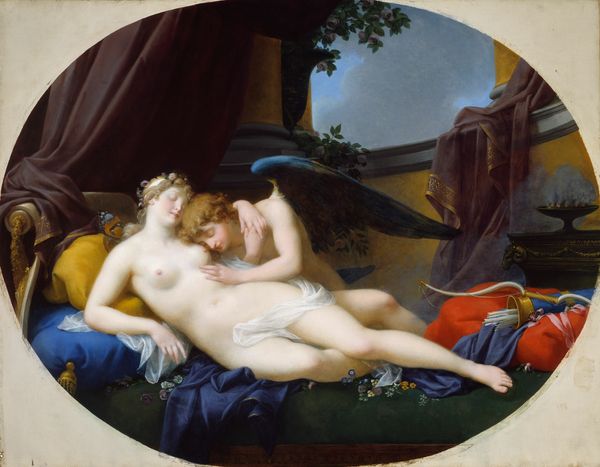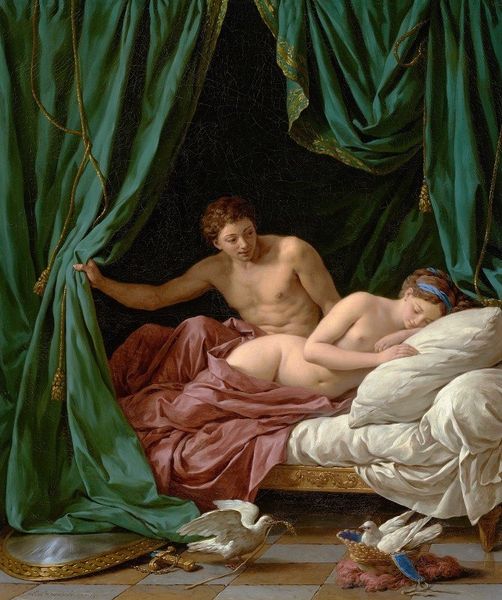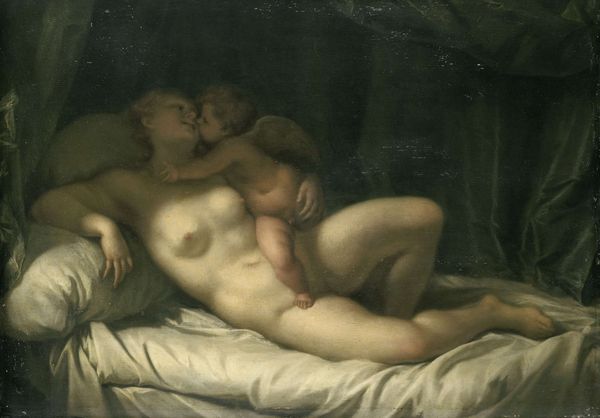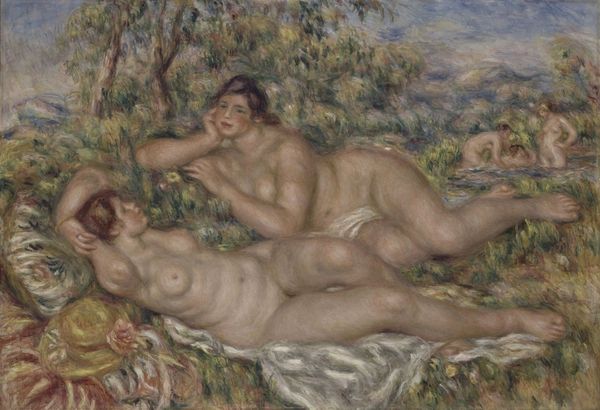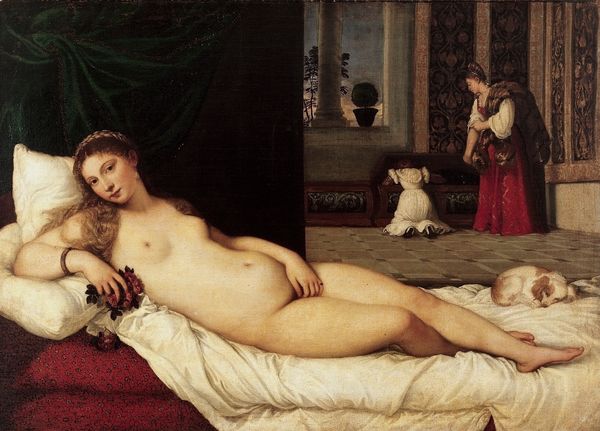
Copyright: Public Domain: Artvee
Curator: Gustave Courbet's "Le sommeil," or "Sleepers," painted in 1866, presents a controversial, yet compelling vision. What's your initial impression? Editor: The overwhelming opulence hits me first. The rich textures of the sheets, the gleam of the pearls, the dark blues of the backdrop–it creates this undeniably sensual and drowsy atmosphere. It feels almost staged, like a tableau vivant. Curator: Exactly! Understanding Courbet’s context helps unpack that. He was actively challenging academic traditions and redefining realism. The materiality here is key: oil on canvas used to depict fleshy forms, heavy fabrics, decorative objects. These details situate it within a world of luxurious excess, potentially alluding to the patronage he relied on, specifically from Khalil Bey. Editor: So, beyond the simple voyeurism, are you suggesting Courbet's exploring ideas of societal decadence or challenging prevailing norms about depicting female sexuality through these entwined bodies? The presence of pearls, that elaborate vase... the conspicuous display of material wealth invites critical dialogue regarding sexuality, race, and colonialism in mid-19th century French society. Curator: Precisely! It's crucial to note how the very act of painting this subject matter in such a direct way was radical for its time. Courbet’s technique involved a very physical engagement with the medium, layering the paint thickly to create the sensuous textures of skin and fabric. These women aren't idealized goddesses but deliberately, visibly real. Editor: That tactile quality disrupts conventional beauty standards! Consider the darker-haired figure and the contrasting fair skin of her companion–does that suggest an intended comment on diversity or some commentary related to relationships in Parisian society at the time? It invites discourse, which challenges simplistic readings. The arrangement is suggestive, almost challenging, refusing to be simply pretty. Curator: It certainly prompts ongoing conversation about how female intimacy has been represented and perceived across history. By explicitly representing two women in this intimate, natural pose, Courbet dismantles the idealized, heterosexual narratives of the era and emphasizes the beauty of tangible bodies. Editor: Indeed! By refusing a singular perspective, Courbet initiates a broader exploration. And beyond the controversy and criticism, this painting remains impactful due to its unapologetic approach and complex message that resonate beyond its original time. Curator: I completely agree. Ultimately, “Le Sommeil” stands as a testament to how art can function as a historical artifact of art's complex relationship with desire, patronage, and revolution.
Comments
No comments
Be the first to comment and join the conversation on the ultimate creative platform.

